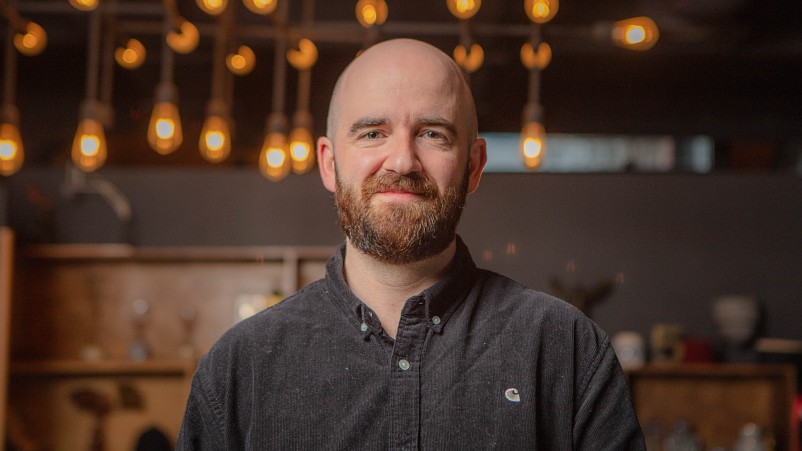Schneider Electric bets big on a CDP as it looks to shift messaging beyond persona to personal

Giant French industrial firm Schneider Electric wants to transform its award-winning sustainability-based pitch from personas to personal, courtesy of a new Customer Data Platform (CDP) implementation that it will roll out across the world. CDPs are more typically found in B2C markets but the use cases are maturing.
What you need to know
- Schneider Electric, a French based industrial giant with a $129bn Euro market capitalisation will implement a Tealium customer data platform for its global operations.
- Its early foray into CDPs included Australia, which implemented Leadspace's CDP.
- According to a senior Schneider marketing executive, it's all part of a transformation that will help move its messaging from personas to people, at a time when a new generation of IT leaders - its core customer cohort - Millennials - are coming into leadership roles.
- And for Millennials, Schneider's sustainability-based messaging resonates strongly.
We can accelerate and help customers with the journey, not based on the data that we think is right, but on the actual online here and now.
French industrial giant Schneider Electric is implementing a customer data platform (CDP) globally as it seeks to unify its customer data around the world. Its initial foray into the world of CDPs – less common in B2B marketing than B2C – started in Australia where the local operation implemented Leadspace which positions itself as a specialist B2B CDP.
However, it’s Tealium that ultimately secured the global gig.
We spoke with Yakov Danilevskiy, VP, Strategy, Marketing and Commercial Operations, Secure Power Division, International Operations, during a recent Schneider Electric Media tour in Barcelona.
He said the evolution of the responsibilities of its customers towards sustainable outcomes ultimately helped Schneider Electric towards the CDP decision.
“Something like 68 per cent of IT managers and data centre managers are starting to have energy efficiency KPIs and that is a big change according to the Uptime Institute.
He says the majority of firms have come to realise that CIOs and IT departments will have a big impact on the sustainability journey of the company.”
For Schneider Electric, a global leader in energy management and automation solutions that help businesses optimize energy use and improve operational efficiency, sustainability is core business and central to its messaging.
Indeed the company, along with Transmission recently won an APAC Drum Award for Marketing off the back of its “Turning Unsung Heroes into Impact Makers” campaign which generated over 1300 business opportunities, creating $AU115M of pipeline. It also saw a 77 per cent increase in the value of opportunities.
“The importance of martech is that it helps us understand how to get to the human in the end."
He told Mi3, “We have reached the pivotal point where millennials are coming into the decision-making roles, and these are sustainably conscious people. How do we reflect this in the marketing, how can we tailor that to the persona?”
That’s where the CDP will play an important role in the future, he says.
For Schneider Electric, the decision to implement a CDP reflects their need to streamline and optimize marketing efforts across B2B segments (as well as its relatively new B2C segments.)
But it is principally a B2B organisation, where CDPs are less common. For example in Australia, the provider Schneider Electric chose as its global partner – Tealium – is overwhelmingly B2C focused, although it does have B2B clients across the region.
Part of the issue is that CDPs such as Tealium’s tend to be deterministic – “we have determined that is the identity” rather than probabilistic “it’s probably that person.” The former is essential in B2C, but less so in B2B where you are typically selling into a purchasing ecosystem.
Tealium itself acknowledges the differences.
In a white paper called Brewing Up B2B Use Cases with Your CDP the vendor notes, “B2B marketing and analytics teams are tasked with prospecting and gleaning insights about entire companies, not just individual consumers.”
Rather than focusing on millions of individual customers, B2B marketers tend to be focused on a few hundred or thousand people.
According to the whitepaper, “The B2B buying process is also more complex. It often involves multiple people (in a typical firm with 100 to 500 employees, an average of seven people are involved in most buying decisions according to Gartner) and the journey isn’t ever really linear.”
However, Tealium argues that even in B2B, people still buy P2P (person to person). “A CDP provides marketers with the opportunity to deliver personalized engagement across all channels at multiple different stages of the funnel. By crafting a single, unified view of your customers you can more easily cut through the complexity of the buying process and deliver the right message at the right moment in order to turn leads into customers.”
Among the B2B use cases it identifies where CDP can provide value;
- Leveraging a Customer Data Platform in combination with customer engagement channels like your email marketing and messaging platform to nurture your prospect during the free trial period across channels.
- In customer onboarding, CDPs can be used to orchestrate proactive marketing to ensure timely content is delivered to new customers improving their onboarding experience.
- Using CDPs to build a comprehensive view of a customer and tailoring new product campaigns to their specific interests and engagement level with the platform.
According to Will Griffith, VP and GM, APJ for Tealium, intent signals in B2B marketing can be arranged in such a way that they give marketers a clear view of an Account’s interest, and that can then help inform Account Based Marketing (ABM).
B2B marketers can use a CDP to map signals and connect them to other data points in the target company, he says.
If a company is in the research phase, for instance, the marketer can tailor the message accordingly. “We can track the content they're consuming and we can surmise that they're more likely to be an IT buyer or a business buyer.”
That aligns with some of the challenges Danilevskiy says Schneider wants to overcome.
It’s the integration into ABM in particular that Danilevskiy says he is excited about. “The big transformation that I see is how CDP is connected to the marketing automation system, which will be integrated into our CRM directly.”
“We will know the journey of our customers through the funnel. Previously it was different segments now it's one thing. So we can accelerate and help customers with the journey, not based on the data that we think is right, but on the actual online here and now.”
The other important element is a dynamic content management system. “Now it's really a personalized view of content. The previous journey was always about persona. Now it's about the person.”
A wide brand canvas
Schneider Electric has four key groups of customers it seeks to serve; hyper scalers like the Googles and Amazons of the world, data centres, individual organisations, and most recently individuals (it offers UPS – uninterruptible power supply – for gaming systems as an example.)
That’s a very wide canvas across which it needs to maintain brand consistency. The answer is simplicity, according to Danilevskiy.
“The story always should be clear and transparent, so that it will resonate with everyone. If you're speaking about hyper scalers, we're telling the whole Schneider story, everything from rack to plug, from Three Phase to Single Phase if needed, and all the different systems. So we have completely covered your needs, including our consulting services if needed."
“Ultimately, it is all about efficiency and about sustainable performance. If you're speaking about data centers, enterprise data centers, it's a similar message, if you're speaking about these smaller edge deployments, In the end, it's a similar message.
Per Danilevskiy, “The core value is to have reliable operations and sustainable operations and efficient operations. That's it.”



